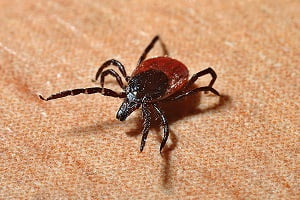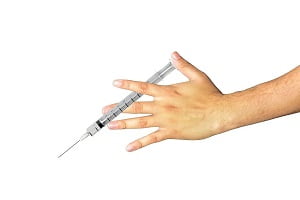Browsing: List of Diseases, Conditions & Syndromes (A-Z Index)
The page provides quick access to a list of common diseases, syndromes, health conditions, and other topics of health importance. The list is organized alphabetically. Links are provided to respective disease sections that serve as a comprehensive and ultimate guide about the disease or health condition.
A
B
Benign Prostate Enlargement Or Benign Prostatic Enlargement (BPE)
Benign Prostatic Hyperplasia (BPH)
Blood Sugar Chart/Blood Glucose Chart
C
D
E
F
G
H
I
J
K
L
M
N
O
P
R
S
T
U
V
X
There are different stages of Lyme disease including – early localized disease, early disseminated Lyme, and late disseminated. Lyme is a vector-borne disease. It is caused by the bacterium Borrelia burgdorferi and Borrelia mayonii. It is transmitted to humans through infected black-legged tick bites.
The diet and nutrition play an important role in Lyme disease. Nutrition doesn’t help in bug-killing but provides strength and health resilience. Regulation of hormone, management of inflammation, immune support, and detoxification function can be influenced by nutrition. The first and foremost recommended food for Lyme disease should be anti-inflammatory.
People carrying a genetic trait for thalassemia do not suffer from major problems except mild anemia. A person can have either alpha thalassemia trait or beta thalassemia trait depending upon which unit (alpha or beta) of hemoglobin is affected. People suffering from thalassemia often suffer from a variety of ailments. Since thalassemia traits don’t present major symptoms, such people should consult their physicians to know their ailments’ exact cause.
Ascites is a condition characterized by an abnormal accumulation of pathologic fluid within the abdominal (peritoneal) cavity. There are many underlying causes of ascites, among which liver disease is one of the most common reasons. Ascites typically begin due to an abnormality in the liver. The most important step in treating ascites is to reduce salt intake in our diet.
Lyme Disease Rash
It is not necessary to identify Lyme disease in its early stages. Though, if a person shows Lyme disease rash symptoms, then identification becomes easier. Lyme rash is supposed to be a common symptom during Lyme infection that usually appears at the infected site of the bite within 3 to 30 days.
Ascites is an accumulation of abnormal fluid in the abdomen, specifically in the peritoneal cavity. When ascites is caused due to cancer, or if the abdomen’s fluid contains cancerous cells, it is often called malignant ascites or malignant peritoneal effusion. Malignant ascites is a manifestation of end-stage events in a variety of cancers and is often associated with a poor prognosis
The risk of severe illness due to the coronavirus is lower than SARS and MERS. Coronavirus infection recovery is good and depends upon the patient’s symptoms, i.e., how severe or mild the symptoms are. People with mild symptoms usually recover within 2 weeks. However, people with severe symptoms may take 3 to 6 weeks to recover.
Clostridium tetani is a bacterium that causes tetanus infection. The bacterium enters the body via some wound caused by contaminated objects and produces toxins, which often cause painful muscle contraction. Every wound does not require tetanus vaccination if the person has undergone primary vaccination for tetanus. Children who have been vaccinated with tetanus vaccine boosters do not require tetanus vaccine after an injury for almost 20 years.
Tetanus is a bacterial infection caused by Clostridium tetani. The bacterium enters the body via some wound caused by contaminated objects and produces toxins that often cause painful muscle contractions. The adverse reactions of tetanus in some people post vaccination include cardiovascular complications, dermatological complications, and neurological complications. All these complications can be life-threatening if not treated on time.
Maternal and neonatal tetanus is a destructive disease caused by toxins released by the bacterium Clostridium tetani. This bacterium lives on dead and decaying matter. Babies born in unhygienic places are more susceptible to tetanus infections. Maternal and neonatal (MNT) tetanus can be prevented by following specific strategies before and after delivery. During pregnancy, women should be vaccinated with vaccine toxoids. During delivery, cleanliness should be maintained to avoid umbilical cord infections, which are among the major causes of MNTs.












